I spent my childhood summers running wild through the Connecticut forests… building forts, searching for salamanders, picking raspberries, and suffering through poison ivy. Now I often return to New England in winter, when I spend Thanksgiving hiking and reading my dog-eared anthology of Robert Frost poetry.
But only recently did I discover that I could turn a simple walk in the woods into a real-life historical mystery.
Using clues hidden in the landscape— a stone wall, old trees, topography — it’s often possible to figure out what a patch of forest used to look like 100 years ago. Ecologist and natural historian Tom Wessels lays everything out in his excellent guide Reading the Forested Landscape. It’s a very readable book, complete with illustrations, that can teach you how to “read” the New England forest to discover its history. (The field guide version is called Forest Forensics.)
One of the most fascinating parts about Wessels’ books (and video series) is how he links natural history with human history. He can look at the decaying log and assess that it was a 20 to 25 year old white pine downed in the hurricane of 1938, and it was growing in a pasture used first for sheep, then dairy cows, and then abandoned between 1910 and 1920.
It’s incredible.
And while Wessels has decades of expertise behind him, with a little practice you too can start learning to “read” the forested landscape. Here are some easy signs to look out for on your next winter walk.
-
Stone Walls
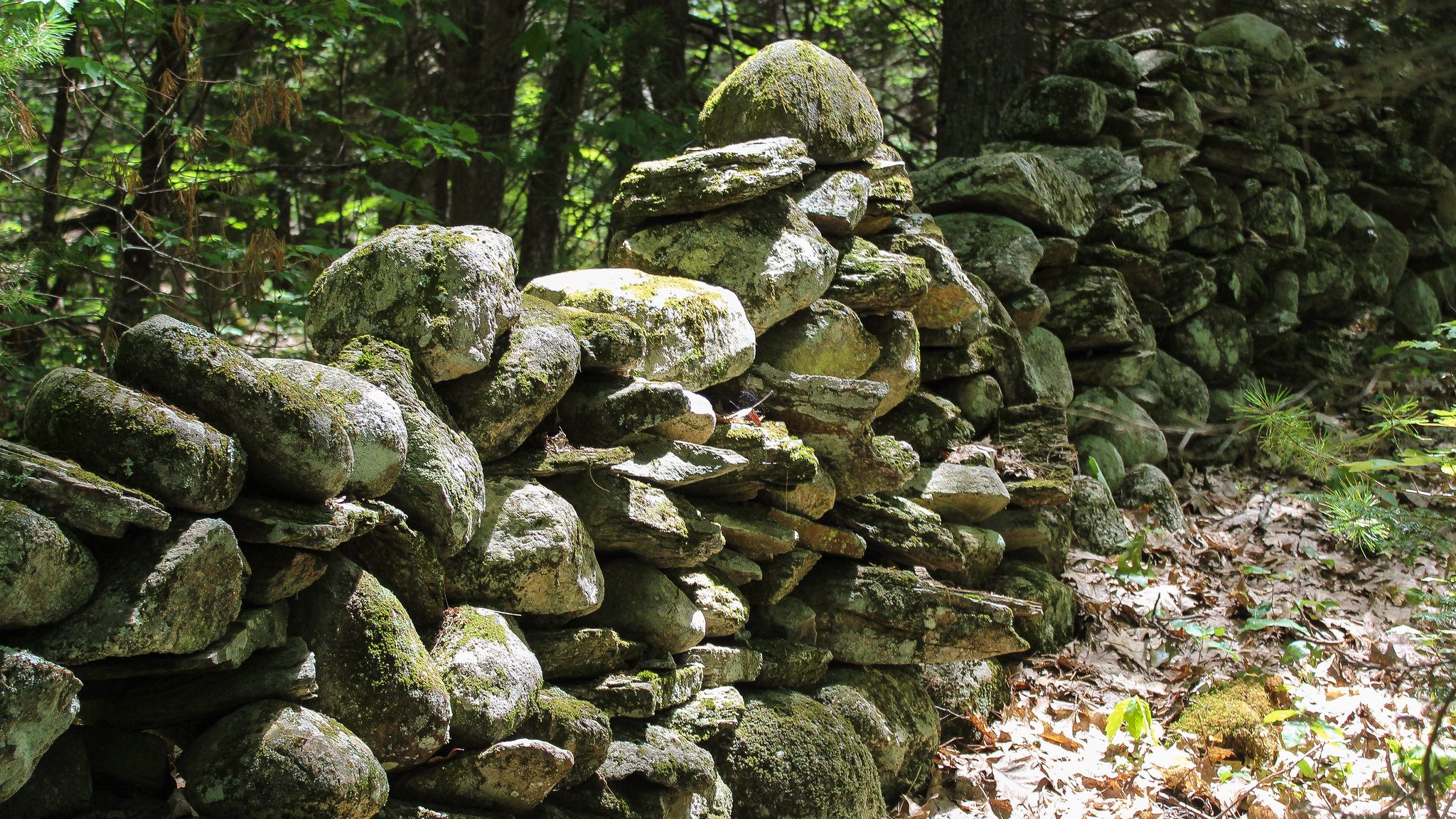
A stone wall in the forest. Photo © Monikah Schuschu / Flickr New England is famous for its beautiful stone walls, running along roads and fields. But have you ever come across a stone wall in the middle of the woods? These walls are a sure sign that the forest was one a pasture or cultivated field.
About 200 years ago, New England had much less forest than it does today. By the mid 1800s, farmers had cleared between 60 and 80 percent of the region for agriculture and livestock, and the forests that did remain were still heavily logged. Logging pressure was so intense that, as of 2010, less than 1 percent of New England’s forests are old-growth forest.
Most of New England’s original stone walls date to around the 1840s, during the merino sheep craze. Deforestation had so greatly depleted wood stocks that farmers were forced to build fences from field stones.
Just a few decades later, farming began to decline in New England. Agricultural production shifted to the westward frontier, New England farmers abandoned their pastures and fields, and forest gradually regrew around the remaining stone walls.
The next time you see an old stone wall in the woods, take a close look at the size of the stones. If the wall has lots of fist-sized stones, it likely bordered a cultivated field used for growing crops. When the earth is bare in winter, alternate freezing and thawing will slowly unearth small stones. Farmers would place these rocks into the gaps in their stone walls.
This process only occurs on bare ground, where there are no roots to hold stones and soil in place. So if you find a wall with only larger stones, it likely bordered a grazing pasture.
If you want to learn more about stone walls, check out the wonderful book Stone by Stone: The Magnificent History in New England’s Stone Walls.
-
Wolf Trees
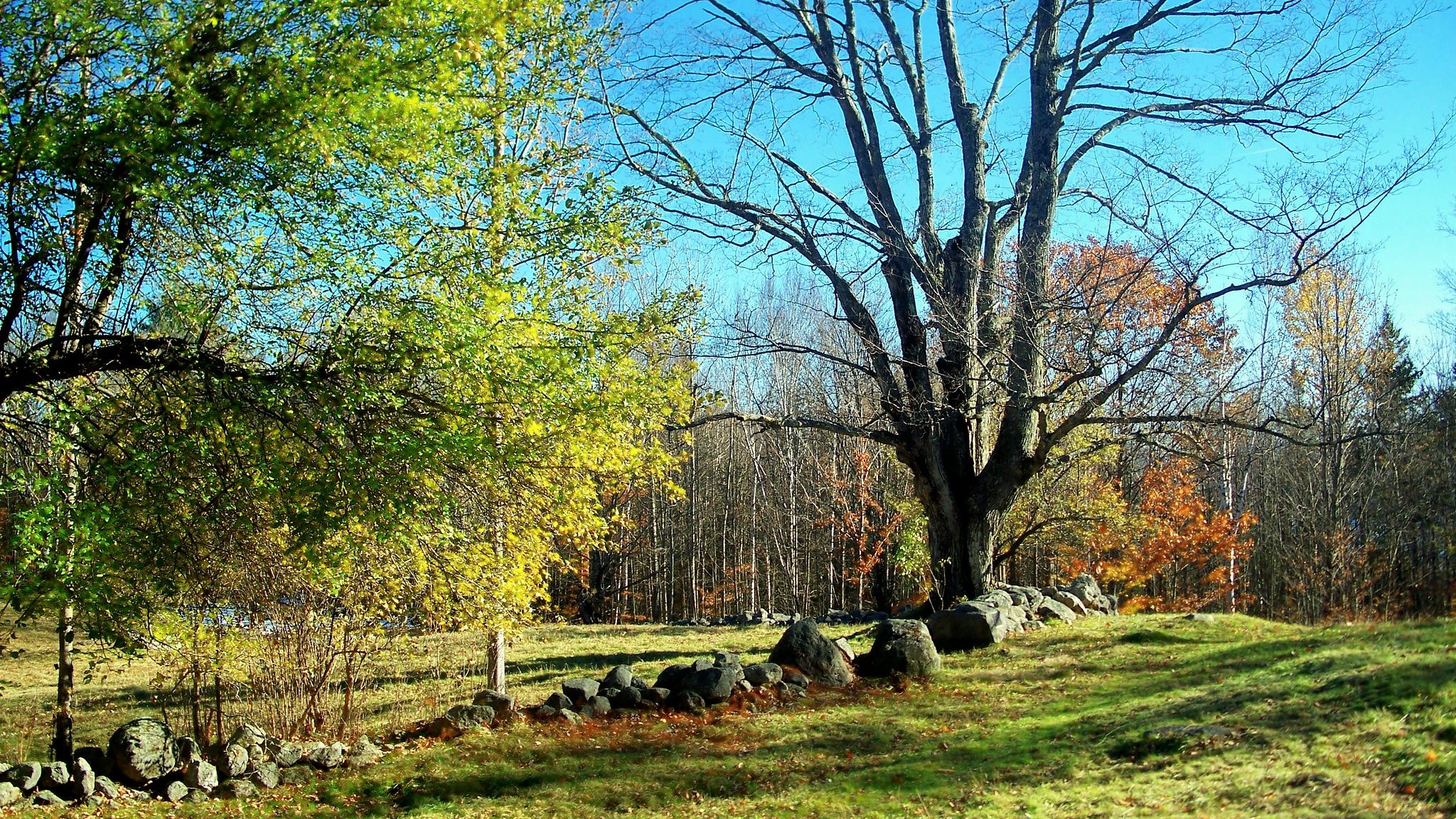
A wolf tree and stone wall bordering a field. Photo © mwms1916 / Flickr Also called pasture trees, wolf trees are one of my favorite things to find in the forest. They’re easiest to spot in winter. Look for an old, large tree with thick limbs growing lower on the trunk.
Where a tree grows impacts its shape. A tree that starts its life in a dense forest will look like a lollipop, with a long, tall trunk and most of the branches far at the top, near the light. But a tree that grows alone in a field will stretch out to take advantage of all the extra sun, growing limbs lower on the trunk. (Think about the best climbing tree from your childhood.)
Wolf trees are evidence that the forest was once a livestock pasture. Farmers wouldn’t leave a tree in the middle of a hay or crop field, where it would hinder ploughing, but they did leave trees in livestock fields to provide shade for animals. You can still find wolf trees in pastures, but you can also find them in the middle of the woods, where a new forest has replaced pasture.
Wessels says that these forest wolf trees will be very rare in about 100 years, and eventually they will disappear from our woods altogether as they age and die. That’s unfortunate news for wildlife, as research shows that birds and mammals prefer wolf trees to forest-grown trees.
It’s also worth noting that the recent period of forest regrowth is at an end. Scientists found that forest cover in New England has been declining since the mid 1980s, largely due to the expansion of suburban housing.
-
Nurse Logs
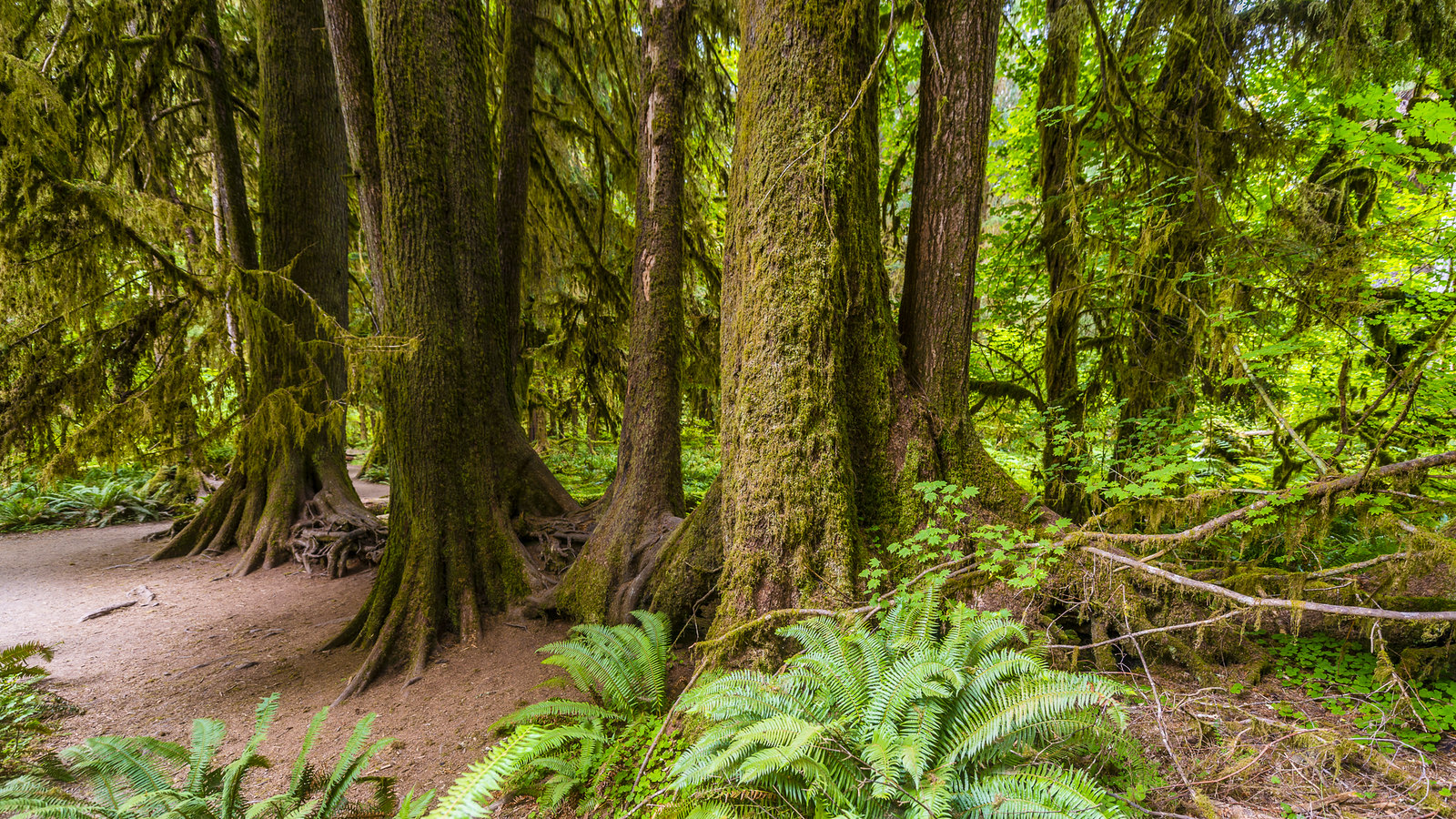
A nurse log in the Hoh Rainforest in Washington’s Olympic National Park. Photo © LDELD / Flickr If you come across a line of similar-age trees with interlacing roots visible above ground, you’ve found evidence of a now-decayed nurse tree.
When a tree falls in the forest, its nutrients help support the next generation of plant life. Tree seeds that land on moss-covered trunks find a perfect environment to help them germinate and grow. Often, several young seedlings start growing along the length of a log, and their roots gradually intertwine. Eventually, the nurse log rots away, leaving only the new trees behind.
Wessels writes that nurse logs are common in the conifer-filled forests of the Pacific Northwest. In New England they are usually found where hemlocks are growing, because nurse logs are most easily colonized by shade-tolerant species, like hemlocks. In these areas, the nurse-log species is often the slow-to-decay white pine.
-
Fallen Trees & Weather Patterns
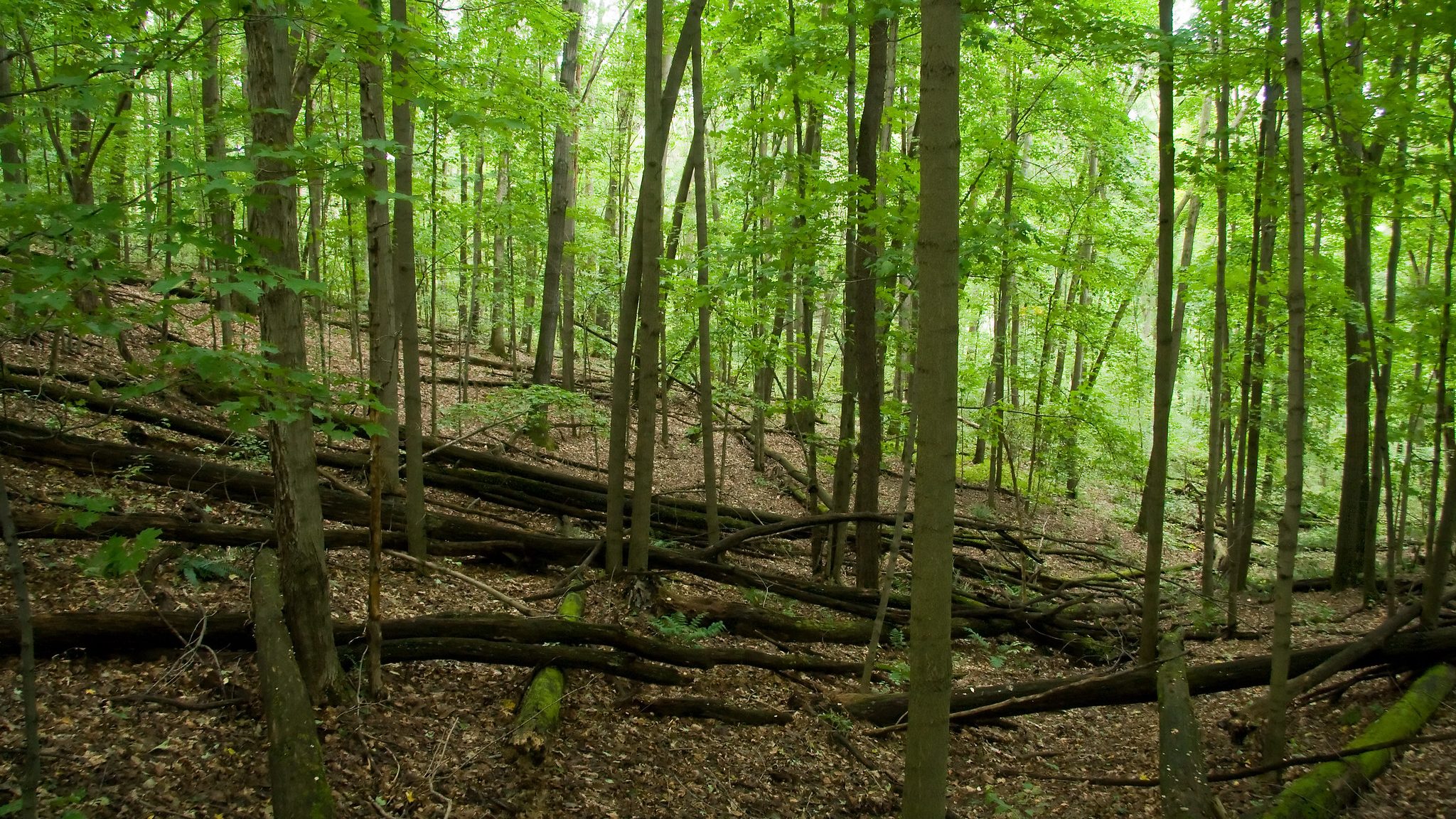
Numerous trees blown down in the same direction. Photo © Jason Pratt / Flickr If a tree falls in the woods, can you figure out what type of storm felled it? Yes, you can.
Trees felled by wind fall in the same direction as the wind, making it possible to discern what type of storm system felled the tree. (The one exception is tornadoes, which fell trees in all directions.)
In New England, the direction of the wind is highly seasonal. In spring and summer, the strongest winds are generated by thunderstorms from the west, so the fallen trees will “point” east. These storms also create microbursts, or downward drafts of air that topple trees in a clear semicircle pointing from northeast to southeast.
Meanwhile, a tree pointing towards the south or west indicates it was felled by a Nor’easter storm whose winds come from the northeast. Downed trees pointing north-west were downed by a hurricane. (Amazingly, Wessels can often date the exact hurricane or Nor’easter that downed a tree by using other clue about tree age and topography.)
-
Glacial Erratics
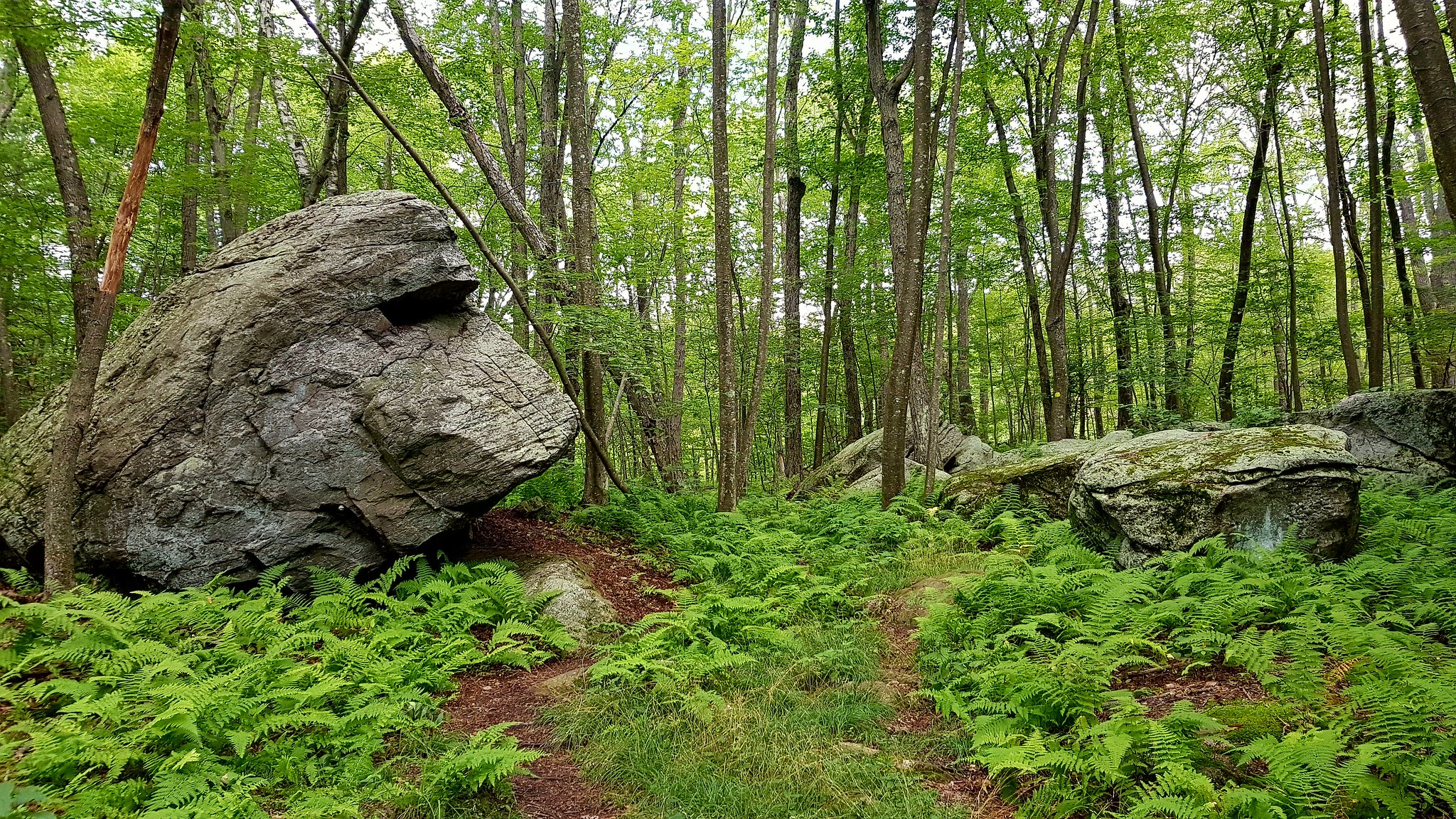
Glacial erratics in Massachusetts. Photo © Lorianne DiSabato / Flickr My little brother and I would spend countless hours building lean-to forts against a massive, lone boulder in the forest behind my Grandmother’s farm. It was twice the size of an SUV and yet it was the only rock in sight. I always wondered how it got there, that is, until I learned about glaciers.
These massive, rounded stones are called glacial erratics, and they’re evidence of New England’s icy past.
During the last ice age, most of New England was covered by the Laurentide Ice Sheet, which in some areas was more than 10,000 feet thick. As these glaciers flowed slowly downhill, they carved off huge chunks from the underlying bedrock and moved them many hundreds of miles. As they moved, the boulders became rounder and smoother, much like a riverstone.
The Laurentide Ice Sheet reached its maximum extent about 18,000 years ago, after which the glaciers slowly receded. As the glaciers melted, they deposited all of the stone and grit lodged within the ice across New England.
-
Glacial Polish & Striations

Deep glacial striations in the limestone on Kelleys Island, Lake Erie, Ohio. Photo © / Flickr Glacial erratics aren’t the only evidence of glaciers visible in the forest.
If you find a patch of smooth, exposed bedrock, look for parallel grooves in the rock face. Some can be narrow, the width of your finger, and others can be wider, like the width of a basketball. Both the smooth surface of the rock and these marks are evidence of a glacier.
When the ice moves over bedrock, all of the rocks and sand trapped within the glacier act like a giant piece of sandpaper, polishing the bedrock surface smooth. The resulting smooth surface is called glacial polish. Larger rocks and stones can also cut deep grooves into the bedrock, known as glacial striations. Some striations are massive, like deep tire tracks, while others are subtle, like thin scratches on glass table.
Like downed trees, striations will hint at the direction of the ice flow. In New England, ice flowed from the north-west to the south-east.
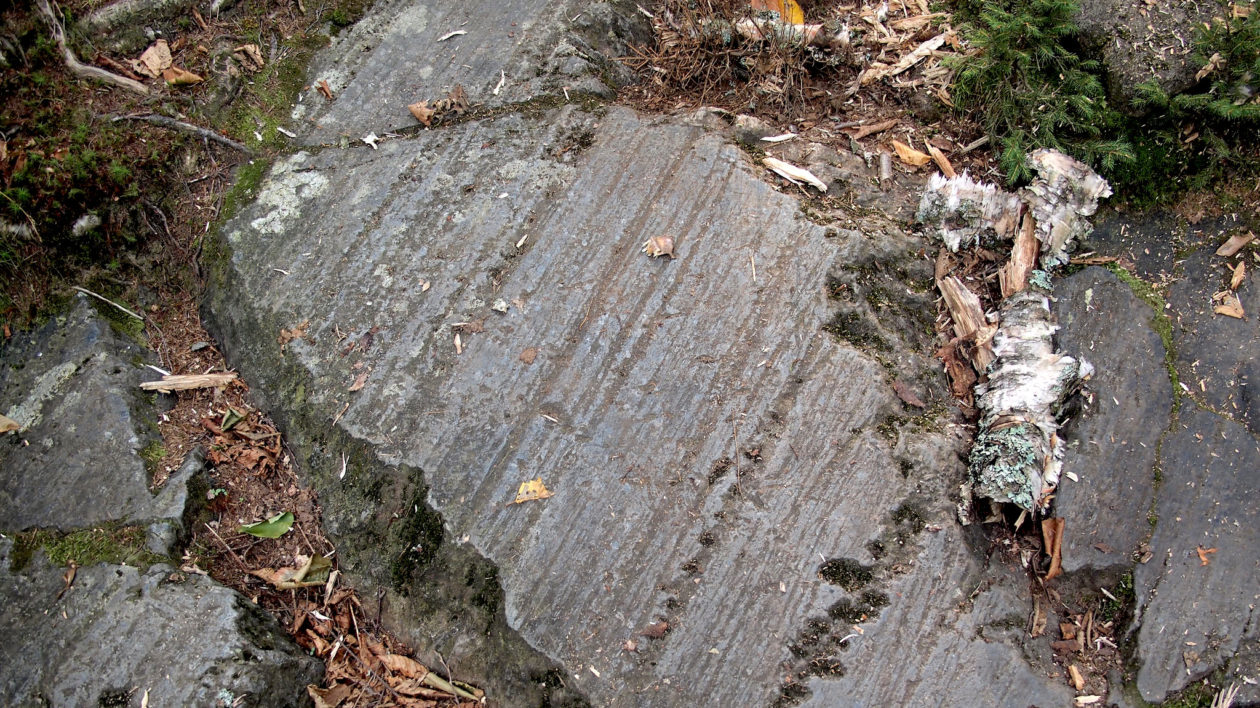
Glacial polish and striations in New Hampshire. Photo © rickpilot_2000 / Flickr
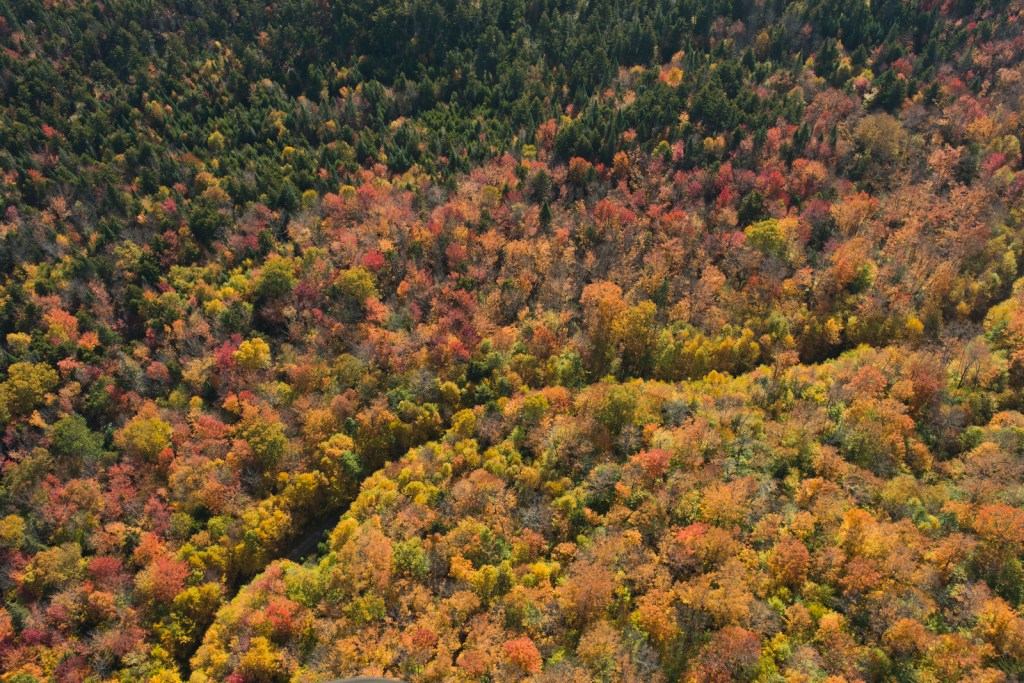



Not all stone walls were created for farming or grazing, nor all large stone structures simply erratics in New England. For more information on sites in Connecticut, Massachussetts and New Hampshire, see: https://www.youtube.com/@Stones_and_Stories
I grew up in New England (north central Massachusetts) doing some of the same things that you did in the “shadow” of the Hurricane of ’38. I didn’t realize the meaning of many of the signs you mentioned until I was in forestry college at SUNY at Syracuse in the late 1960s.
I am now living in Hayden, Idaho (northern panhandle) and find myself thinking back to New England where the forest history is much longer and colorful.
You brought back some wonderful memories for me.
Thank you for sharing – I can’t wait to go out and explore with new eyes.
There are also “witness trees”, planted to mark the corners of property lines where they met. My little piece of land once had four sugar maples that marked out the oddly shaped lot. A fifth was added when a chunk was taken out of one side for a right of way many years later. Two trees were only rotted stubs when I bought the property. I had some dying box elders taken out to free up the trees that were left. Unfortunately the biggest and handsomest of the witness trees, at the south facing corner, was twice hit by lightning, and now is ragged with a hollow core. It still stands, though, and makes fine habitat for a variety of creatures. A good-sized sprout is growing up through the core and out one of the lightning holes, buttressing it- so it may last a long while yet. And that youngest witness maple tree, freed of the crowding box elders, is now the largest tree on my lot.
Riveting. We need more articles like this and fewer articles about how TNC is buying into the “sustainability”, “renewable energy”, and “climate change” hoaxes.
Wow, just simply wow.
Love natural history and this is it. Thanks for sharing! I’ll have to check out this book.
Thank You for the brief and very understandable read in the article you shared with me and the rest of the world. You are one of the points of education in our lives on this planet earth. The earth which I find
very compelled to do what I can thru Nature Conservation efforts.
I grew up in the Southern Appalachian region, and grew up hiking in the Boy Scouts and with friends in all seasons of the year. Then I attended graduate school at the University of Virginia in Charlottesville in the late 1970s. I lived in a newly built dorm complex on the edge of a second-growth forest where I would find stone walls as described in the wonderful article. I loved walking there in the spring, when dogwoods and native azaleas were in bloom. I’m afraid if I returned there today, those wood s would be more dorms or suburban housing. Fortunately, I now know some “secret” wilderness spots in my own city.
I guess you could call our back yard tree a wolf tree. We live in the original footprint of Manchester. The story goes that the trees were put at the edge of the Haddock property to absorb the moisture from the downhill little stream. A line of trees were planted there. It was also where the attached outhouse was, it’s been removed. Garbage and old broken pottery were there. We live behind that house, on the next street. One tree remains, huge and beautiful. The roots are approaching our house after all these years. It’s a sugar maple. We love it.
Best”Cool Science “ article, to date( 2019 – present! Like the author credit!
Excellent article. Most of us who have grown up in cities and suburbs are so blind to nature. It’s taking a concerted effort on my part to better understand and appreciate the natural world. Articles like this make that effort as pleasurable as it should be. Out here in the SF Bay Area, it takes less than 30 minutes to reach a primeval conifer or oak forest. But I’ve indeed noticed that there are still many indications of prior human activity in the forests, from the scooped out bedrock used by indigenous people as mortars, to the stone wall remains of a 100 year old failed camp resort. There’s always something to learn, as long as we keep up that sense of wonder we had when we were young and climbing trees!